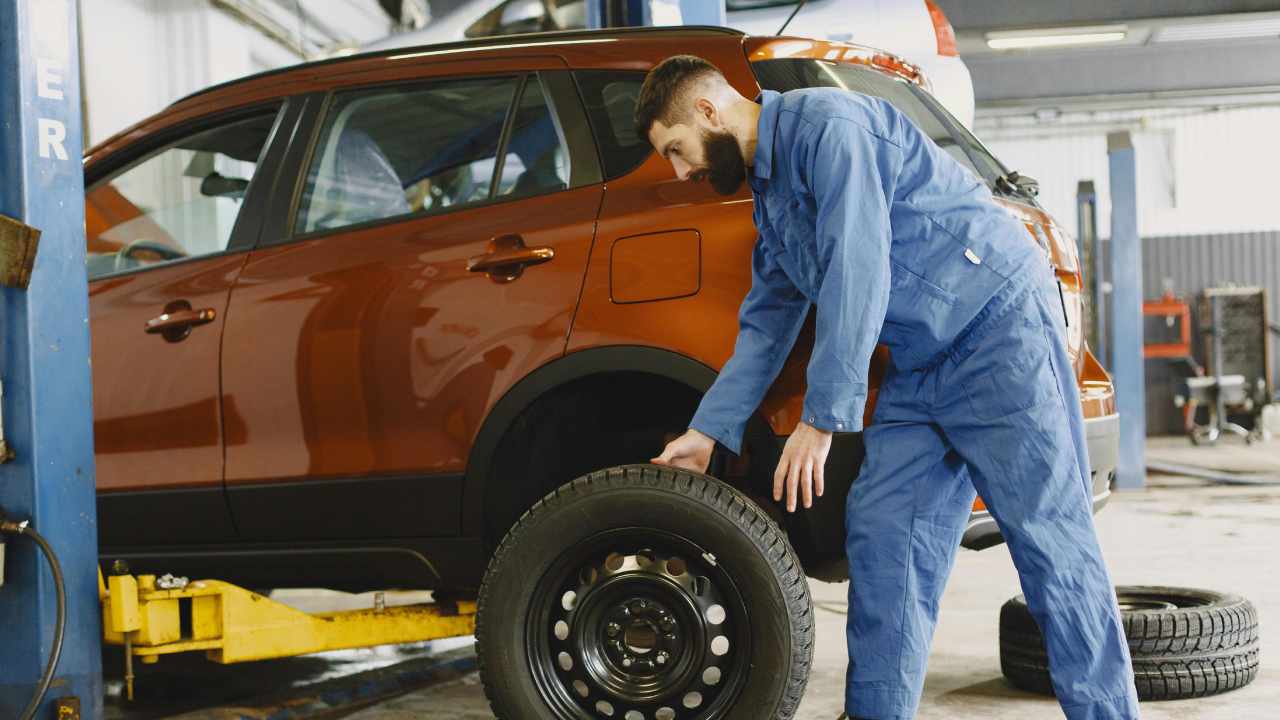Track days are the ultimate playground for car enthusiasts. The thrill of pushing your car to its limits, mastering tight corners, and feeling the adrenaline rush on a straightaway is hard to match. But as exciting as these high-performance experiences are, they take a toll on your car. Whether you’re a seasoned racer or a track day novice, knowing how to assess your car’s condition post-track is crucial for safety, performance, and your car’s longevity.
This guide covers the most common repairs you might face after a track day, practical advice on what to inspect, and tips for preventive maintenance to keep your car in top shape for your next lap.
Essential Car Repairs and Maintenance After Track Days
High-speed driving and aggressive handling can place immense stress on your vehicle’s components. Here are the most common areas requiring attention after a day on the track.
1. Brakes
Brakes take the most abuse on the track. Hard braking from high speeds generates intense heat, which can lead to wear and tear.
- What to Inspect:
- Brake Pads: Check for wear and thinning. Racing or heavy use can quickly degrade standard pads. If they’ve worn down significantly, replace them promptly.
- Rotors: Look for warping or discoloration caused by overheating. Warping can lead to vibration during braking.
- Brake Fluid: Track driving heats up your brake fluid, potentially reducing its effectiveness. If the fluid appears dark or you experienced a soft brake pedal on the track, consider flushing and replacing it.
- Upgrading to higher-performance brake pads and high-temperature brake fluid is a wise choice for regular track-goers.
2. Tires
Your tires are your only point of contact with the track, which makes inspecting them post-track absolutely essential.- What to Inspect:
- Tire Tread: Aggressive cornering and intense acceleration cause uneven tire wear, especially on the outer edges. Measure the tread depth to determine if your tires are safe for continued use.
- Sidewalls: Check for bulges, cuts, or tears, as they can compromise safety.
- Tire Pressure: Tire pressures often change due to the heat generated during track driving. Deflate or inflate the tires back to recommended levels for daily driving.
- If you’re planning more track days, consider dedicated track tires like semi-slicks or performance tires that are better suited for high-speed conditions.
3. Suspension
The suspension works overtime on the track, absorbing sharp turns, bumps, and uneven loads.- What to Inspect:
- Shocks and Struts: Look for leaks, excessive wear, or a bouncing sensation during driving, which indicate worn-out suspension components.
- Alignment: Track driving can throw off your car’s alignment, leading to uneven tire wear and poor handling on the road. Ensure you check your alignment post-track and make necessary adjustments.
- Bushings and Mounts: Inspect these for cracks or excessive wear, especially if you heard clunks or noticed reduced handling performance on the track.
- 4. Fluid Levels
Track days push your car hard, which often means fluid levels drop quicker than during regular driving.- What to Check:
- Engine Oil: Check for low levels and discoloration (dark or gritty oil may indicate wear or overheating). Top up or replace as necessary.
- Coolant: Inspect for proper levels and ensure there are no leaks. Overheating engines are common on track days.
- Transmission and Differential Fluids: These are frequently overlooked but work overtime on the track. If you notice a burnt smell or sluggish gear shifts, have them inspected and replaced if needed.
- Fluid leaks can often develop under the intense pressure of the track. Don’t overlook any signs of pooling liquid under your vehicle post-track.
5. General Wear and Tear
High-performance driving tests your car in every way. Beyond the critical components above, inspect other areas such as the exhaust system (for cracks or loose connections) and the battery (to ensure secure connections).
Preventive Maintenance for Future Track Days
While regular harm to your car on the track is inevitable, proper preventive measures can reduce the risk of damage and limit the need for extensive repairs.
Upgrade for Performance
- Invest in high-performance brake pads, rotors, and fluid; they’re designed to withstand the extreme heat generated during track use.
- Upgrade your tires to performance or semi-slick versions for better grip and longevity.
- Consider beefier components for your suspension if you’re a frequent track enthusiast.
Stick to a Maintenance Schedule
- Service your car more frequently if you’re an avid track driver. This includes oil changes, brake inspections, and drivetrain servicing.
- Keep a log of mileage and track hours to plan for component replacements before they fail.
Prepare Your Car Beforehand
- Always check fluid levels, tire pressure, and brakes before hitting the track.
- Empty unnecessary items from your car to reduce weight and distractions.
Proper preparation not only minimizes the risk of post-track repairs but can also make your driving experience safer and more enjoyable.
Expert Advice for Track Enthusiasts
To further refine your post-track maintenance routine, consider these tips from professionals and experienced racers.
- From a Professional Mechanic:
- “Always give your car time to cool down before inspecting critical components like the brakes and suspension. Heat distorts materials and makes assessing damage more difficult.”
- — Chris Watts, Performance Tuning Expert
- From an Experienced Track Day Enthusiast:
- “Keep a complete tool kit and spare fluids in your car for emergencies. Having these supplies on hand saved me from ending a track day early more times than I can count.”
- — Emma L., Amateur Racer
- Learning from those with experience can save you significant time, effort, and money in maintaining your car post-track day.
Keep Your Car Thriving Off the Track, Too
Post-track maintenance is essential not just to prolong the life of your car but also to ensure every track day is as fun and safe as possible. Thoroughly inspecting components like brakes, tires, suspension, and fluids after every session keeps your car running at its best and helps you avoid costly repairs down the road.
Every track enthusiast develops their own routine over time, but starting with the basics outlined here can set you up for long-term success.
Have your own tips or post-track rituals? Share them in the comments below, and don’t forget to sign up for our updates for more expert advice delivered right to your inbox.

